MÁY GIẶT
Screw washer is a small part placed between the screw head and the surface of the connected object, which is mainly used to disperse pressure, prevent looseness, reduce wear and protect the surface of the connected object.
Flat washer: Flat washer is the most common one, and its shape is a simple flat ring. Its main function is to increase the contact area between the screw head and the surface of the connected object, thus dispersing the pressure. For example, when using screws to fix soft materials (such as wood or plastic), the flat washer can prevent the screw head from directly pressing into the material, so that the pressure can be evenly distributed over a larger area of the washer and the material can be prevented from local deformation or damage.
Spring washer: the spring washer is spiral and looks like a small spring. Its main function is to provide elastic force to prevent the screw from loosening under vibration or dynamic load. It is often used in mechanical devices, automobile parts and various devices that need to withstand vibration. For example, in the connection of engine parts, the spring washer uses its own elasticity to continuously exert an axial elastic force after the screw is tightened, which increases the friction between the screw thread and the connected parts and effectively resists the loosening trend caused by engine vibration.
-

Vòng đệm phẳng là một phần thiết yếu của bất kỳ cụm dây buộc nào. Vì chúng phục vụ để kết hợp khoảng cách và phân bổ tải trọng khi được đặt giữa đai ốc và bu lông hoặc vít, chúng sẽ giúp ngăn ngừa mài mòn và biến dạng bề mặt lắp đặt theo thời gian.
-

Vòng đệm phẳng cường độ cao cho bu lông cường độ cao. Bề mặt mà máy giặt ngồi sẽ không bị chìm. Những vòng đệm này ngăn không cho bu lông bị nới lỏng do bề mặt mà chúng nằm chìm xuống, v.v.
-

Vòng đệm lò xo là một loại phụ của vòng đệm có hình nón để ngăn chúng tựa thẳng vào bề mặt mà không có tải trọng. Chúng được thiết kế để cung cấp lực lò xo và hấp thụ chấn động bằng cách cung cấp tải trọng dọc trục giúp chống lại các rung động. Do đó, vòng đệm lò xo có thể ngăn chặn đáng kể các chốt bị nới lỏng theo thời gian.
-

Vòng đệm kết cấu là thép carbon trung bình, được xử lý nhiệt và làm cứng đến 35-41 HRC. Vòng đệm kết cấu được sử dụng với Bu lông kết cấu và được thiết kế cho các kết nối kết cấu thép với thép như tòa nhà và xây dựng cầu.
-
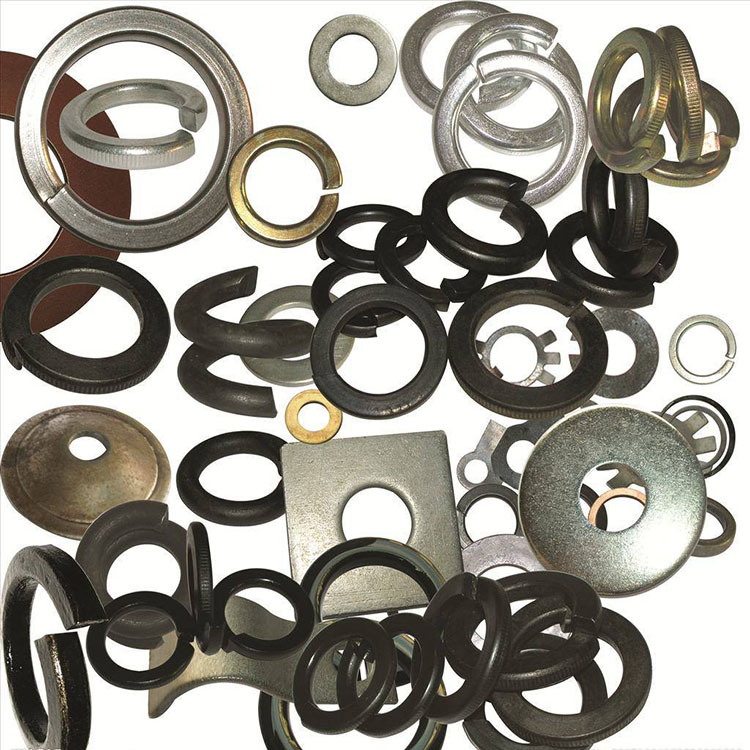
Vòng đệm đặc biệt có mục đích tương tự như vòng đệm tiêu chuẩn truyền thống, tuy nhiên chúng được xác định bởi hình dạng bất thường của chúng là không phải hình tròn ở bên trong hoặc bên ngoài.
-
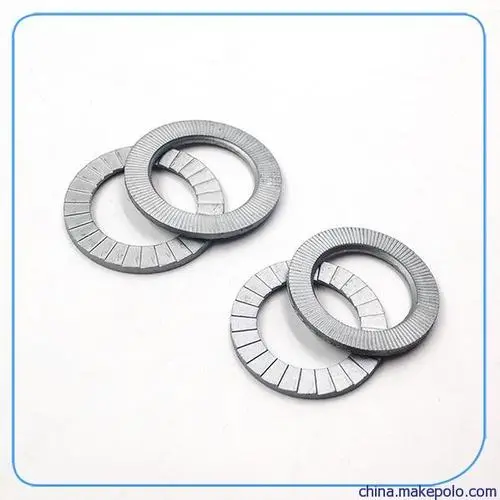
Vòng đệm khóa tạo lực căng bằng cách “khóa” bu-lông hoặc vít vào lỗ ren của phôi. Không giống như vòng đệm phẳng, chúng có răng cưa trên thân vòng đệm để ngăn xoay và mang lại kết nối an toàn hơn so với vòng đệm phẳng. Những vòng đệm này thường được sử dụng trong môi trường có độ rung cao để tránh nới lỏng cụm dây buộc.
-
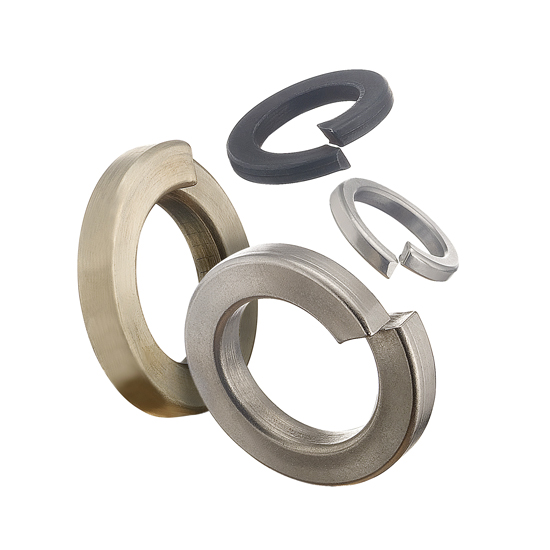
DIN127 Vòng đệm lò xo là một loại phụ của vòng đệm có hình nón để ngăn chúng tựa thẳng vào bề mặt mà không có tải trọng. Chúng được thiết kế để cung cấp lực lò xo và hấp thụ chấn động bằng cách cung cấp tải trọng dọc trục giúp chống lại các rung động. Do đó, vòng đệm lò xo có thể ngăn chặn đáng kể các chốt bị nới lỏng theo thời gian.
-
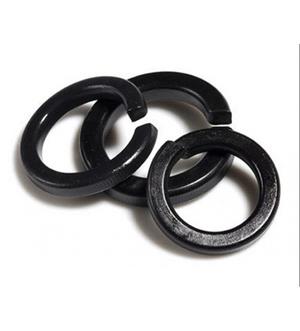
DIN127 Spring washers are a subtype of washers that are conical in shape to prevent them from res
-
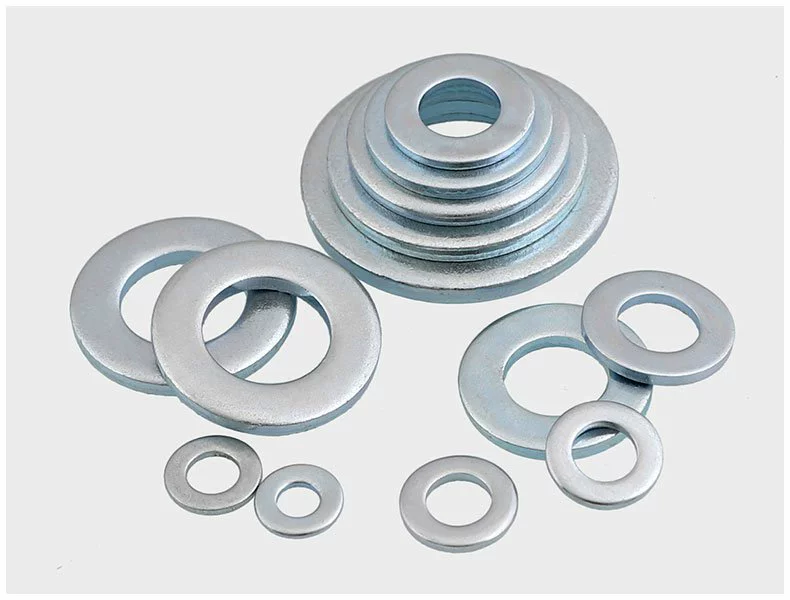
Vòng đệm phẳng là một phần thiết yếu của bất kỳ cụm dây buộc nào. Vì chúng phục vụ để kết hợp khoảng cách và phân bổ tải trọng khi được đặt giữa đai ốc và bu lông hoặc vít, chúng sẽ giúp ngăn ngừa mài mòn và biến dạng bề mặt lắp đặt theo thời gian.
Material of Screw Washer
Screw washers are made of various materials. Flat washers can usually be made of carbon steel, stainless steel, copper and other materials. Carbon steel flat washers have low cost and high strength, and are suitable for general mechanical and building connections. Stainless steel flat washers have good corrosion resistance and are often used in outdoor environments or places with corrosion risks, such as marine facilities and chemical equipment. Copper gasket has good electrical and thermal conductivity and is used in some electrical equipment or connections that need good heat dissipation. Spring washers are generally made of spring steel, which is heat-treated to obtain the required elasticity and strength. The material of toothed washer also has a variety of choices, such as carbon steel and stainless steel, which are determined according to the specific application environment.
Key Points of Screw Washer Selection
When selecting the screw washer, the stress of the application scene should be considered first. If it is subjected to large axial pressure, it may be necessary to choose a thick and high-strength flat washer; For the environment with vibration, spring washer or toothed washer is a better choice. Secondly, the material characteristics of the connected objects should be considered. If it is a soft material, the hardness of the washer should not be too high to avoid crushing the material; For corrosive environment, choose the gasket material with good corrosion resistance. In addition, the size of the washer should match the specifications of the screw, the inner diameter of the washer should be slightly larger than the diameter of the screw, and the outer diameter should be determined according to the actual needs to ensure that the washer can function normally.
Mutual Cooperation Between Washer, Screw and Connected Object
Matching with the screw: the inner diameter of the washer is slightly larger than the diameter of the screw. Generally speaking, the inner diameter of the washer is about 0.1-0.3mm larger than the diameter of the screw, which can ensure that the washer can be smoothly sleeved on the screw without shaking on the screw. For screws with different heads, the choice of washers is also different.
For example, for flat head screws, the thickness of the washer should consider the thickness of the screw head to ensure good contact and pressure distribution between the screw head and the washer and the surface of the connected object after tightening; For hexagon-head screws, the washer can better match the plane of hexagon-head and effectively transmit torque during tightening.
Matching with the connected object: When selecting the gasket, the material hardness and surface roughness of the connected object should be considered. If the connected object is soft material, such as wood, rubber, etc., the hardness of the washer should not be too high to avoid damaging the material during tightening. For objects with rough surfaces, such as some metal castings that have not been finely machined, it may be necessary to choose washers with a slightly thicker thickness to make up for the influence caused by uneven surfaces.
At the same time, the outer diameter of the washer should be determined according to the size and connection requirements of the connected object, so as to ensure that the washer can completely cover the contact area between the screw head and the surface of the connected object, and give full play to its role of dispersing pressure and protecting the surface.



